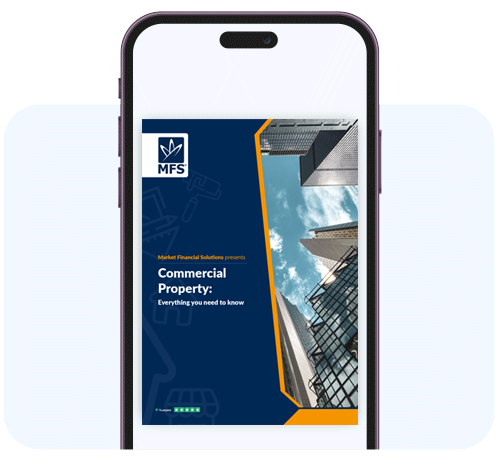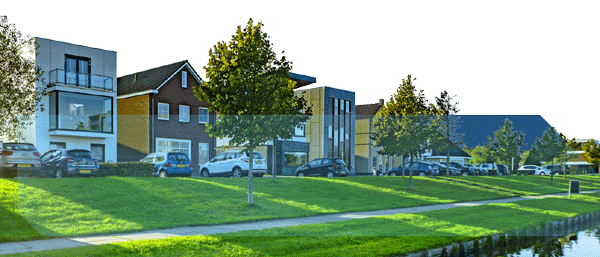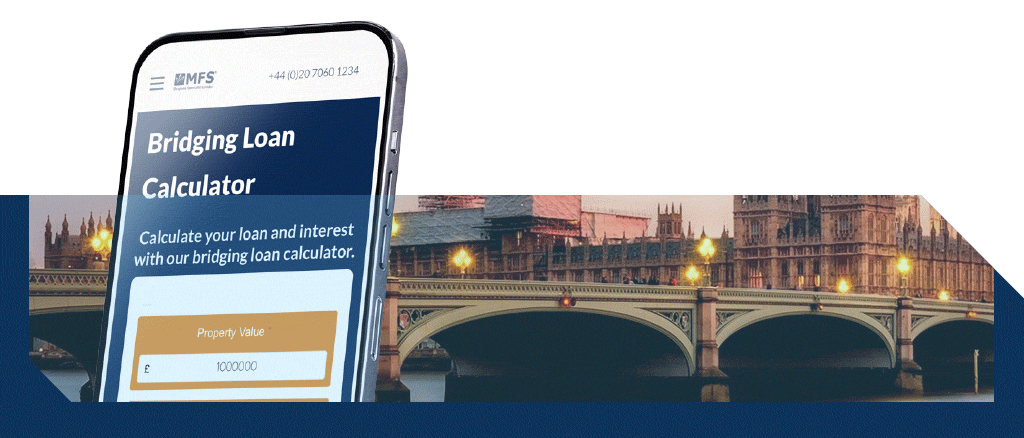The Complete Guide
- 31-page guide about understanding & buying commercial property
- Comprehensive overview to regulations, funding & more
- Industry insights into demand & profits
- Useful tools to determine finance
Get your free Guide below.

Commercial Property Guide
An Introduction To The Basics
Commercial property investment can be challenging when compared to the residential market. There may be more variety in the types of properties investors can target, along with renters and/or buyers of their assets.
This guide will cover all the elements of the commercial world of real estate, to identify:
- The different types of commercial real estate by sector,
- Go through the process of buying commercial property
- How they can fit within an investment strategy
We will break down these intricacies and provide investors with the tools they need to navigate commercial investments with confidence, within the current UK property market.

What is commercial property?
In the simplest terms, a commercial property is a building that is used for business purposes, and isn’t being used as a domestic dwelling common examples include: offices, retail units and warehouses.
The size of a non-residential real estate will vary depending on the company’s nature. An office may need to house hundreds of employees, meanwhile, an automotive manufacturing plant will need several thousand square metres of space to produce vehicles. On the other hand, a dentist’s office may be converted into a commercial space from a residential property.
It’s also possible for commercial and residential property to co-exist under one roof and share a title*. These buildings are often referred to as either mixed-use or semi-commercial properties. An example would be a flat located above the pub.
*A title is related to the deeds of the property and will register whether the property is either a freehold or a leasehold property, and outlines who owns which sections of the land.

Types of commercial property
Commercial property usually falls within five core categories. Within these categories, there are many different types of properties and uses, which were originally broken down in the Town and Country Planning (Uses Classes) Order of 1987.
These 5 categories are:
1. Offices
Office space can be used by businesses of all shapes and sizes. A small accountancy firm, all the way through to a FTSE100 Blue Chip can house employees in an office. Offices may be large or small, depending on how many employees there are, and other factors.
2. Retail units
Retail property is used for sale of goods and services directly to consumers (as opposed to wholesaling). This includes retail businesses such as department stores, the large shopping centres that may house them, and smaller shops.
3. Industrial property
Industrial property generally includes large warehouses, factories, and manufacturing hubs. These properties are used for a range of major business activities. Including the production and development of goods, research spaces for new technologies, wholesale warehouses, and distribution centres.
4. Leisure
Leisure property is, as to be expected, a building to be used for leisure activities. Typically, these leisure activities involve the use of services, more so than physical products. Common examples include restaurants, pubs, hotels, cinemas, gyms.
5. Healthcare
Finally, there are healthcare properties. Obvious examples include hospitals and GP surgeries. But this category can also include nursing homes, pharmacists, clinics and more.
Its own kind
Outside of these main types of assets, you may also find “Sui Generis” properties. This translates to “of its own kind” and covers properties/businesses that do not typically fall into any of the previous categories. Examples may include launderettes or petrol stations.
When buying commercial property, investors will want to think about the type of property that’s right for their circumstances.

Commercial property use classes
Commercial properties are further categorised into use categories via legislation introduced in 1987, which was then updated majorly in 2020. Below you can find the main classes, but within teach section there are more splits:
- Class B: In Class B, for example, properties will either be “B2 General industrial”, or “B8 Storage or distribution”.
- Class C
- Class E: Class E, for comparison, includes many more sub-categories, such as: “E(a) – display or retail sale of goods, other than hot food”, and “E(d) – Indoor sport, recreation or fitness”.
- Class F
- Sui Generis
Property investors can “change the use” of their properties where desired, either within the same use class, or from one to another.
However, certain changes and projects will require planning permission from a Local Planning Authority (LPA). You can find the details of your local authority through the Planning Portal website. It’s worth contacting your local council before any major work commences to see if planning permission is required, and if there are regulations or restrictions.

Leasehold vs. freehold
All properties, including business real estate, are usually freehold or leasehold.
- Freehold grants an investor exclusive ownership of it, meaning they can do with it as they will
- Leasehold means investors will not own the property, but have exclusive possession of the premises for a certain amount of time
Both options present pros and cons. Freehold property investment can bring with it more freedom and optionality. But investors will likely be responsible for all the maintenance and repairs for the building. They also tend to be more expensive than their leasehold counterparts.
Leasehold property can keep costs down. Short-term leases can also offer greater flexibility for certain types of businesses. However, leaseholders will not be able to alter the building to their needs without the owner’s permission. Leases also often come with regular rent review provisions, which could see monthly outgoings rise frequently.
Investors will need to determine which option is right for their circumstances.

Types of commercial property leases
There are several types of leases that commercial buyers need to be aware of, if they choose to invest via this route.
Gross leases
For short-term occupancies, gross leases will be common. These leases grant business tenants’ sole occupation of the property through a flat fee in the form of a rental payment. The freeholder and/or landlord involved will incorporate their costs into the rent.
Net leases
With net leases, the commercial tenant will pay some or all of the costs of the property on top of the rent. Typically, this includes taxes and ongoing utility bills. Net leases are split into three categories:
- Single net leases: A single net lease will require tenants to cover the property’s taxes, while the landlord pays the other costs.
- Double net leases: With a double net lease, tenants will pay the property taxes and insurance costs.
- Triple net leases: Finally, with triple net leases, tenants will need to pay all the costs associated with the property, on top of the rent.
Absolute leases
Similar to triple net leases, there are also absolute leases. These place the vast majority of all the financial responsibilities onto the commercial tenant. Generally, the more costs a leaseholder covers, the more control and flexibility they’ll have.
Percentage leases
Percentage leases are also available. Here, the rent paid is dependent on the business’s performance. An agreed percentage of the business’s gross sales will be added onto the rent.
Often, a “breakpoint” will be included. This means that if the sales are below a certain threshold, only a base level of rent will be charged. With these leases, the agreement is tied to the success of the underlying business.
Sometimes, these leases may present themselves under different names. For example: Gross leases can be referred to as full-service leases. There are also modified gross leases, and absolute leases, which add further complication.
Before buying commercial property via a leasehold, investors will need to make sure they fully understand what the lease involves and requires of them.
Standards & regulations for commercial property
Generally, owning commercial property will come with certain responsibilities by law*, although most will be dependent on the lease involved.
Health and safety risk assessments must be carried out, and action needs to be taken where hazards are found. This usually involves:
- Fire safety
- Gas safety
- Electrical equipment safety
- Managing asbestos.
Business tenants will also be responsible for providing:
- A reasonable temperature
- Enough space
- Ventilation and lighting
- Toilets and washing facilities
- Drinking water
- Safe equipment
A building’s fire safety is particularly important. People are responsible for fire safety in a business, or other non-domestic premises, if they’re an employer, the owner, landlord, occupier, or anyone else with control of the premises.
Commercial property investors can use CCTV to protect their assets, but they must follow data protection laws and have to:
- Put up a sign to let people know CCTV is used and why
- In most circumstances, be able to provide images within 1 calendar month to anyone you’ve recorded
- Share images with the authorities, like the police, if they ask for them
- Keep images only as long as your business needs them
- Pay a data protection fee
Also, they must have an Energy Performance Certificate (EPC) if they rent out or sell the property. They’ll also be needed where buildings under construction are finished or where there are changes to the number of parts used for separate occupation and these changes involve providing or extending fixed heating, air conditioning or mechanical ventilation systems.
Currently commercial landlords must have a minimum EPC rating of E, unless they have a valid exemption. A list of valid exemptions is availble on the government’s website.
*Guidance on these requirements are available on the government’s website. Also, expert advice can be sought.

Rights & responsibilities as a landlord
Business property lettings aren’t as clear as residential letting. Therefore, there can be confusion as to who is responsible for a property’s safety and suitability – the landlord or the tenant. Often, their responsibilities overlap, making it difficult to find an obvious answer. As such, it’s often advised to clearly lay out responsibilities within individual leasehold agreements. Seeking expert guidance from legal firms can help with this.
Generally, though, landlords are often expected to be responsible for a property’s structural maintenance. They are also obliged to provide tenants with peaceable possession of the commercial property.
They mustn’t unlawfully interfere with the tenant’s use of the premises. What’s more, building insurance on commercial property is usually handled by the owner or landlord. Although, the costs of building insurance can be passed onto the tenant.
Where disputes arise between commercial landlords and their tenants, specialist solicitors can help mediate and resolve certain issues. Examples include dealing with claims for dilapidations and disrepairs, contested rent reviews, and terminating or renewing tenancies.
Should commercial tenants stop paying rent, landlords have several options available to collect what’s owed, or take other remedial actions. Chiefly, there is forfeiture. This enables landlords to end a lease where tenants fail to pay rent. An express right to forfeit can be laid out in a lease.
There is also the Commercial Rent Arrears Recovery (CRAR) statutory right. This allows commercial landlords to recover rent through the seizure, and sale of their tenant’s goods. Outside of these options, there are also payment agreements, debt recovery proceedings, statutory demands and more.
Each of the options available to commercial landlords have their advantages and disadvantages. To investors understand what may be best for their circumstances, they should seek out expert guidance.

Rights & responsibilities of the tenants
Responsibilities for commercial property will often be laid out in a tenancy agreement. This agreement will clearly identify who is responsible for what – the commercial landlord or the tenant.
Generally, commercial tenant’s rights are defined via the Landlord and Tenant Act of 1954. This act can give business tenants the right to “Security of Tenure”, while also regulating the way in which commercial leases can be ended or extended.
Security of Tenure provides commercial tenants with the right to renew their tenancies on the same terms when it ends. It also allows businesses to stay in the premises during the renewal process.
Even with (or if) Security of Tenure is in place however, landlords may still be able to refuse the grant of a new lease under certain statutory grounds. This is a complicated area and so investors should seek out expert legal advice for further guidance. Under an absolute lease, nearly all the property’s financial obligations will fall on the tenant. This means they’ll be responsible for the insurance costs, taxes, ongoing maintenance and more….
Evidently, combing through the details of a lease is essential for both commercial landlords and tenants. Commercial lease solicitors can help with this.
Another area in which commercial tenants need to be careful, are the rules concerning whether they can live in their commercial property. Regardless of why a commercial tenants may want to “sleep at the office”, it is probably unwise to do so. It may invalidate insurance, for starters, and could breach contractual agreements that are in place, planning use restrictions, and even trespassing laws.
Broadly, commercial tenants shouldn’t be living in their business premises. But of course, if it makes sense to do so, commercial buildings can be converted into residential properties.
Commercial property guide – the investment side of things
Commercial real estate can offer stability when it comes to income.
Take offices, for example:
- On average, the length of a lease for an office is around 8 years.
- Whereas the average number of years private renters stay in their homes in England sat at 4.4 years in 2022.
How much is paid in rent will also vary widely by location, and sector type:
- In the UK, the average rental cost for office space was around £35 per square foot per year in mid-2023.
- But, what’s paid could be as low as £18 per square foot per year in Newcastle, they could be as high as £100 in London.
- In fact, in the affluent area of Mayfair, renting office space will cost businesses around £1,000 a month per desk.
Despite the variation though, healthy yields can be found across many industries. The Savills all-sector prime yield sat at 5.95% in September 2023. Whereas prime equivalent yields were:
- 8.25% for shopping centres
- 7.5% for leisure parks
- 6.75% for high street retail assets

Investment options
When it comes to buying commercial property, there are many options for investing.
1. Direct investment
Arguably the most obvious involves direct investment. Here, investors will purchase a commercial property with the aim of utilising it for a return. This can be done through several means. For example: Investors can rent the commercial space out to a business to generate income, sell the property on to another buyer for a profit, or convert the property to target a new market.
There are many options available to investors when it comes to financing these purchases. Should they have the capital available, commercial real estate can be bought with cash. Otherwise, they can apply for a commercial BTL mortgage, or utilise more bespoke options such as a bridging loan.
2. Commercial property funds
Outside of owning a physical building outright, direct and indirect property funds are available to investors.
Direct funds, also known as bricks-and-mortar funds, allow people to invest in business property through a collective investment scheme. Often, this involves a unit trust, or Open-Ended Investment Company (OEIC). These investment vehicles directly invest in a portfolio of commercial assets. Including: manufacturing hubs, retail stores, and other types of properties that may be directly inaccessible to smaller investors.
Indirect property funds also offer investors another way to collectively gain exposure to the property market. These collective schemes invest in shares of property firms that are publicly listed on the stock market. Typically, this may be done via an investment in a Real Estate Investment Fund (REIT).
Each one of these options presents risks and opportunities. A direct purchase, for example, will grant investors complete control over the property, but will likely be the most hands-on option. Whereas investing in property firm’s shares will put them at the whim of the stock market’s movements. When buying commercial property, investors will need to evaluate what’s right for their individual circumstances.
Advantages of investing in commercial property
There are many advantages to incorporating commercial real estate into a portfolio. Doing so will allow investors to diversify their holdings.
There are the types of property – which includes offices, stores, warehouses and many more.
Then there are specific sectors to factor in. Investors could expand with an office for a soft drink company, all the way through to a major manufacturing hub for an electronics firm.
Commercial property can also present many income advantages. Leases tend to be longer, and yields could be higher, securing cashflow over the long-term.
There could also be fewer ongoing maintenance demands, in comparison to residential BTL investments. Commercial tenants, via a lease, are often responsible for the maintenance of the property. Meaning, owners may not be called upon to make repairs, sparing them costly upkeep bills in the process.
Challenges of buying commercial property
While there are many benefits of buying commercial property, there are also challenges that need to be factored in.
From the outset, the initial investment is likely to be expensive. More so than it would be for a residential investment.
It may also involve more complex management when compared to residential property. Liquidity may also prove to be an issue.
There may be a smaller pool of investors for the commercial world. Meaning, owners may have difficulty in finding buyers should they choose to sell your asset down the line. On this, while long leases can bring in long-term rental income, they can also be restrictive when it comes to selling.
Ultimately, investors will need to weigh up the pros and cons of buying in commercial property, and decide if it works with their circumstances.

How to calculate the property value
There are multiple ways to calculate a property’s value. Before making any investment, investors should consider the:
- Location of where they want to invest
- Local economy
- Rental income potential
- Size and condition of the property they’re looking at
How they plan to invest and generate profit from their commercial property will affect the method of valuation used. Common valuation methods include:
The cost approach
A calculation of the approximate cost of a commercial property based on what it would cost to build a similar property on the same land. This method can be useful for new properties where there may be limited sales data available.
The formula for this is:
Property Value = Land Value + (Building Costs – Depreciation)
The sales comparison approach
This involves comparing a property to similar assets in the area that have been sold. Once these properties have been identified, investors can note any key differences between them and their property, and incorporate adjusted costs.
Say an investor analysed 3 similar commercial buildings in this way, the formula will be:
Property Value = (Building 1 + Building 2 + Building 3) / (Total Amount of Buildings)
The gross rent multiplier (GRM) method
This method is useful if an investor is focused on income. The GRM will tell them how long it will take to pay off a property based on the income it generates.
The formula is:
GRM = Property Selling Price / Annual Gross Rental Income
This will give an indication on when an investment will start being profitable. The lower the GRM, the more worthwhile it may be.
These are simple break downs of just some of the valuation methods available to investors. Income capitalisation, value per door, and general income approach methods are also available.
To help get a complete picture of a commercial property’s value, professional valuation services should be utilised.

How to increase the property value
Commercial property values can be increased via several means.
Refurbishment and/or renovation could be a good place to start. By improving the aesthetics of a modern office, or adding the latest design features to a restaurant, investors could make their real estate more desirable. As such, they may be able to generate higher rents from business tenants, or more substantial offers from potential buyers.
Investors could also expand, where possible. By increasing the “lettable floor space” of a property – the areas which could generate revenue if they’re turned into functional spaces – investors could have more tenants and/or charge more in rent.
Keeping an eye on demand in the market could also pay dividends. Say an investor owns a restaurant, but within the local economy there’s more demand for office space. By converting a property to adapt to this demand, investors may generate more interest in their asset.

How to turn residential into commercial property
Before engaging with any residential-to-commercial property conversions (or vice versa), investors should check to see if planning permission will be required. This can be done by contacting the local planning authority through a council.
Should planning permission be needed, they’ll be able to guide investors on the process.
Investors should also check to see if their project is applicable for permitted development rights. Relatively new rules allow the conversion of certain commercial properties to residential properties without requiring full planning permission.
Once investors have their planning permission situated sorted, they can then get the ball rolling on the actual conversion project. To do this, they’ll want to engage with architects, designers, contractors, legal advisors, and the like…
Beyond this, investors can focus on attaining funding to support their plans. This can include their own capital, mainstream finance, and/or bespoke options.

Property costs
Commercial real estate can bring with it many costs that need to be budgeted for.
If investors plan on buying commercial property with a commercial mortgage, they’ll likely need to have a deposit of 20%-40%. The specific amount will depend on the lender and be affected by a range of circumstances, including industry experience, the business type involved, and credit history.
Investors also need to consider estate agent, solicitor, and lender fees. These will vary greatly, but may each typically be charged at a small percentage.
Property management companies can help with ongoing costs and admin, but will levy a charge for their services. These fees can be between 4% and 12% – leaving space for different sized budgets.
There is also refurbishment and/or maintenance costs. Over time, through wear-and-tear, a property will likely be afflicted with a number of defects. For examples service pipes becoming clogged, or roofs needing repair. Collectively, these defects are known as dilapidations. The cost of amending these dilapidations could amount to £7.27 per square foot. The final bill could easily stretch to 6 figures.
Also, commercial landlords now must hit a minimum EPC standard of E. There are believed to be over 19,000 commercial buildings in the UK with non-compliant EPCs, according to recent research. If a property falls below the standard, costs will need to be budgeted to increase the rating to ensure it is legally accepted.
The analysis showed that, based on average commercial rents, commercial landlords could end up losing over £1bn in annual rents from non-compliance with the Minimum Energy Efficiency Standards (MEES). Upgrading a commercial property to be greener may be costly in the short-term, but the long-term costs of failing to act could be greater.

Taxes
Commercial property is, generally, taxed differently than residential property. Some of the differences tend to be beneficial for property investors.
Capital Gains Tax
CGT is now levied at the same rate for commercial properties as for residential properties. If an investor is a basic rate taxpayer, selling as an individual, they’ll pay 18% CGT on commercial real estate. For higher and additional rate taxpayers, it rises to 24% for commercial assets in 2024/25.
If investors sell their properties via a limited company, they’ll pay corporation tax instead of CGT, which is currently levied at 25%. Also, if an investor’s business is specifically to buy and sell property (developers for example) CGT won’t be due. Instead, they’ll pay income tax (if they’re sole trader or partner) or corporation tax.
Income Tax
Income tax is also likely to be paid by commercial landlords who receive income from tenants, Generally, individuals who receive an income from property are given a property allowance of £1,000. Also, people can receive an income of up to £12,570 before any income tax is levied – which is known as the personal allowance.
Stamp Duty Land Tax
SDLT is also likely to be paid by commercial landlords who receive income from tenants, Generally, individuals who receive an income from property are given a property allowance of £1,000. Also, people can receive an income of up to £12,570 before any income tax is levied – which is known as the personal allowance.
For leasehold sales, 1% is charged on the net present value of rent on the portion of the property between £150,001 and £5,000,000. Above £5,000,000, it’s 2%.
What’s more, while taxes such as VAT and council tax may not be applicable for these kinds of commercial interests, there are some circumstances where they could be levied.
Property tax is a complicated issue and as such, it is worth seeking advice from a tax professional and/or accountant. Not only will these experts be able to guide investors on what is due and when, they may also help them take advantage of any applicable allowances or tax perks.

Where to find commercial property
- Commercial real estate, to be bought or rented, can be found on some of most well-known property sites. This includes Zoopla and Rightmove. On these sites, it’s possible to narrow down a search to find the exact property one is after. For instance, investors buying commercial property via one of these firms can filter by location, property type, minimum size, and maximum price.
- There are also specialist property agents and/or advisors who solely deal with business properties. Examples can include John Payne Commercial, or Field & Sons Commercial.
- Some local councils will also sell industrial units and other commercial properties under their ownership. What’s more, debilitated or abandoned commercial real estate often turn up in auction houses. Here, investors may be able to secure an asset at a reduced price.
- Certain residential properties hold the potential to be primed and converted into commercial spaces. A large block of flats could be turned into offices, for example. It may be worth keeping an eye on the residential market for a commercial strategy.

Finance Options
Before buying commercial property, investors should be thinking about their financing options. While the option investors go for will depend on the property they buy, and their circumstances, it may help having an idea of what’s out there ahead of time.
For instance, investors may want to think about what the rates are like in the current market for commercial mortgages vs commercial bridging loans. Or, they could ask themselves if they’ll need funding for an auction purchase, rather than buying via an agent.
Beyond this, investors should research what market options are available, and which ones seem worthwhile in pursuing. This could start with the geographic location. Perhaps investors want to explore potential office demand in London, or leisure opportunities in Cardiff.
Investors may also want to think about timeframes. Do they want to secure long-term income from a business, or renovate an empty space for a fix-and-flip strategy?
Once they have found a suitable property, they will need to agree a purchase price with the seller involved. Typically, this will be done through an estate agent, who will help with the paperwork involved.
As a sale is agreed, the solicitors/conveyancers will get involved. The overall terms of the deal will be handled by the solicitors, with a contract package being sent by the seller’s solicitors to the buyer’s.
The buyer’s solicitors will then carry out their due diligence after this package has been received. This will include a review of the mortgage details, should a commercial mortgage be involved.
Finally, if the investor and their solicitor is happy with the details, the sale contract and transfer deeds will be agreed upon by both parties. When everything gets signed, the buyer’s solicitor will cover the deposit, and move the deal to completion.

Commercial property finance
Investors have many financing options available to them.
Commercial Mortgages
Commercial mortgages may be the logical first step for many, and they can help with investments in offices, shops, leisure centres and more. Generally, these mortgages come in two main formats:
- Capital repayment: With capital repayment mortgages, a portion of the capital borrowed along with added interest is repaid monthly. By the end of the loan’s term, the commercial property will be paid off in full.
- Interest only: With interest only mortgages, the interest is repaid monthly, but not the capital. By the end of the term, a lump sum will be needed to cover the capital in full.
Secured Loans
Aside from mortgages, some lenders may also offer secured loans. These can be used for a business property, or for a deposit. As the name implies, investors will need to utilise an asset already owned as a security. Some lenders may also consider a third-party security instead of, or alongside other securities. A guarantee is a common example of this.
In the bespoke lending world, bridging loans can be used for a commercial investment. These loans can come in many forms and be used for a range of circumstances. For example, bridging can be used to purchase, refurbish, or bid on a commercial property.
Bridge Fusion can also be an option. Combining the best of bridging and buy-to-let, it offers a slighlty longer term than bridging loans, with deferred and rolled interest options adopted from buy-to-let mortgages. Fusion is especially useful to wait out market uncertainties on lower interest rates, potentially saving thousands of pounds in interest.
Remortgages
Remortgages are also available for commercial real estate. This involves taking out a new mortgage on an owned commercial property to find better terms, or release equity. This can be done with mainstream lenders and/or bridging providers.
Other options
Outside of these possibilities, there are also other alternative options for financing a purchase.
Some local authorities will provide grants to help commercial expansions. Also, commercial properties can be bought via Self-Invested Personal Pension (SIPP) or a Small Self-Administered Scheme (SSAS).
Investors will need to determine what form of finance may be right for them.

Useful tool:
Commercial property loan calculator
Buying commercial property can be complicated and costly. There can be many different fees involved, and an investor’s individual circumstances can add further complication.
To help with this, our bridging loan calculator can allow users to factor in a range of different financial elements that’ll show how much our loans may cost them, and if we’re the right lender for their situation.
This free, interactive tool allows users to enter several details of their investment. This includes:
- A property value
- Any outstanding mortgage
- The loan amount required
- The term length needed
- It also allows users to choose between various interest repayment plans, and enter an interest rate and arrangement fee
As these details are entered, corresponding results will be updated in real time. These results will show:
- How much the monthly payments may cost
- The LTV the investor is looking at
- Along with the gross and net loan amount
The results are calculated estimations, however. So, for exact figures, users will want to get into contact with our underwriters.
Industry Insights
“One in five landlords (19%) are considering diversifying into commercial property, with 37% of these citing ‘diversification’ as the key reason for doing so. Those who already own commercial properties are also planning to expand further, with 35% of landlords with commercial assets stating that they are looking to invest in more within the near future.” (Property Reporter)
“36% of all landlords said that they have noticed the increase in demand for commercial property and view it as a good investment opportunity.” (Property Reporter)
“In contrast to housebuilding, commercial building activity in the UK continued to expand in August with S&P Global/Cips UK Construction Purchasing Managers’ housebuilding sub-index reading 54.2 in August 2023.” (Financial Times)
“There are nearly 28,000 sites with an estimated market value of over £1.5 billion located across England, primed to be converted from commercial use into residential property.” (Property Industry Eye)

Case Study 1
A client with vast amounts of property experience reached out to us to help with a complicated case. The client wanted to expand their portfolio, consisting of multiple properties throughout London, with the help of specialist finance.
The investment consisted of several new properties, each having separate setups and end goals, with a mix of both commercial and residential units. All properties were in prime locations and given the different types of property involved, attention to detail was paramount. We were also facing pressure from tight deadlines being put on the borrower.
Our underwriter got to work. One of the properties was a fully commercial property, which had received interest from businesses looking to utilise the space.
Whilst the mix of residential and commercial purchases presented complication, each individual asset remained strong, with clear desirability from perspective tenants. As there was clear demand for the assets in question, we provided the required funding. (Case study 1)

Case Study 2
A borrower turned to us to support their plans to purchase a semi-commercial property. They had been running their business from the commercial unit of the property for some time, and a rare opportunity to purchase the property arose. It was perfect timing for the borrower, they just needed fast finance to secure their investment.
Our underwriter investigated the borrower’s background, along with their long-term business plans, to ensure the deal sat on solid foundations. The borrower aimed to purchase the mixed-use property consisting of a commercial unit, and a self-contained flat.
However, the property was attractive to external buyers, so our borrowers wanted to move quickly – both to secure the property for themselves, and ensure their business was able to continue as normal.
We reviewed the borrower’s situation internally, determining no problems would emerge. We also worked with the valuer to determine the prospects of this investment. They confirmed it held potential and with the borrower having a long-term plan in place, along with a solid refinancing exit strategy, we were able to deliver funding. (Case study 2)

Case study 3
A client turned to us as they required funding for a commercial property, but a number of issues had to be ironed out to progress.
During our checks and discussions with the client’s mortgage broker, there appeared to have been some adverse credit within the past 12 months. While a mainstream lender may have dismissed the case outright at this point, our underwriter looked for a solution.
They could see that the client was currently in a healthy position, and that the property being invested into held a lot of long-term potential.
What’s more, our funding would provide breathing space for the client. Allowing them to clear their debt obligation and remove the barrier to securing refinance later down the line.
With the strength of the underlying asset, coupled with the client’s solid planning, our underwriter was happy to issue the loan. (Case study 3)
Useful links
- The Town and Country Planning (Use Classes) Order 1987
- The Town and Country Planning (Use Classes) (Amendment) (England) Regulations 2020
- Changes to the planning system in England: Permitted development rights and use classes
- Use Classes
- Find your Local Planning Authority
- Renting a business property: tenant responsibilities
- Asbestos regulations for your commercial property
- Fire safety in the workplace
- CCTV installation at your commercial property
- Landlord and Tenant Act 1954
- Planning permission
- Capital Gains Tax: what you pay it on, rates and allowances
Conclusion
Hopefully, this commercial property guide has answered some of the questions you have about investing in this corner of the market.
The commercial property world is going through something of a re-examination at the moment. With the pandemic behind us, and flexible working prevalent, many are thinking about what we should do with all our empty offices and department stores.
At the same time, there is still a clear need or demand for leisure spaces or manufacturing hubs. Some may be unsure of how best to progress, while others could spot an opportunity for conversion projects, or moving into new industries.
Regardless of what plans are followed though, we’ll have funding available to support a wide range of borrowers. Our loans can be used by individuals to buy their first commercial property, through to experienced professionals expanding their portfolio.
All our commercial loans are underwritten from day one. So, no matter how complicated an investor’s situation may be, we want to hear from them.
Market Financial Solutions are a bridging loan and buy-to-let mortgage provider and are not legal, financial, investment or tax advisers. This document is for informational purposes only and does not, and should not be considered, to constitute legal, financial, investment or tax advice or be relied upon by any person to make a legal, financial, investment or tax decision. Therefore, Investors are encouraged to seek appropriate professional advice. The information in this content is correct at time of writing.
